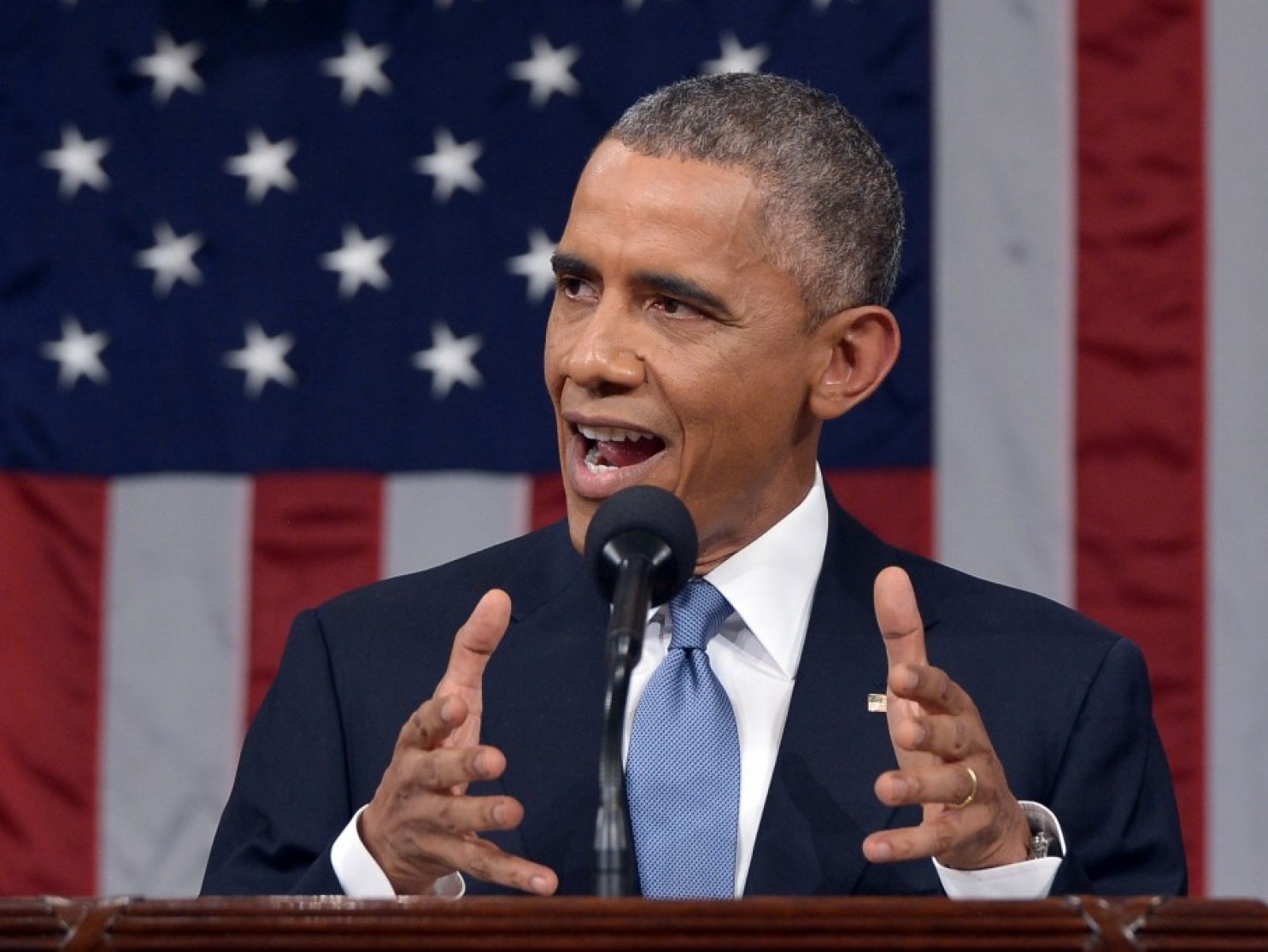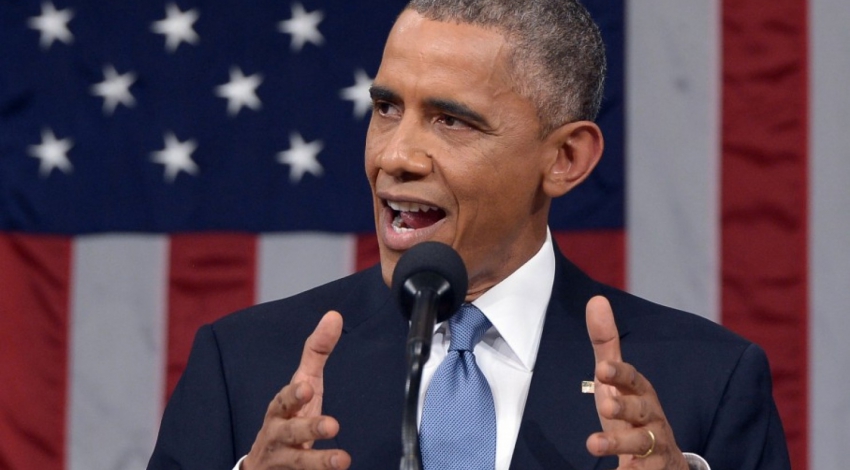 (AP Photo/Mandel Ngan, Pool)[/caption]
(AP Photo/Mandel Ngan, Pool)[/caption]ďOur diplomacy is at work with respect to Iran, where, for the first time in a decade, weíve halted the progress of its nuclear program and reduced its stockpile of nuclear material.Ē
ĖPresident Obama,†State of the Union address, Jan. 20, 2015
This was a bold statement by the president regarding the interim ďJoint Plan of ActionĒ governing negotiations with Iran over its nuclear ambitions. In defending†the talks against efforts in Congress to pass a sanctions package if the talks fail, the president made two key points: one, progress on Iranís nuclear program has been ďhaltedĒ and two, Iranís stockpile of nuclear material has been ďreduced.Ē
We realize that White House speechwriters probably donít want to be bothered with technical issues in such a high-profile speech but hereís a case where some further wordsmithing was needed.† This isnít the first time. A year ago, in the 2014 State of the Union, The Fact Checker†handed out Pinocchios†when the president claimed that the inspections allowed under the agreement were ďunprecedented.Ē Thatís way too sweeping a statement.
So has progress been halted and the amount of nuclear material reduced?
The Facts
The Iran portfolio is highly contentious and progress in the talks ó which have been repeatedly extended ó†is certainly open to interpretation. We should also note that Iran has†steadfastly denied†it has nuclear-weapons ambitions.
For the purposes of this fact check, we will rely on the†definition of ďnuclear materialĒ†by†the International Atomic Energy Agency, which includes low enriched uranium (less than 20 percent, generally 3.5 percent enriched), highly enriched uranium and so forth. (This graphic†helps explain why 20-percent enriched is so much closer to nuclear-weapons material than 3.5 percent.)
The administration, in its official statements, portrays the agreement as a success. Hereís how Deputy Secretary of State Antony Blinken described the progress in a Senate hearing on Jan. 21:
Before the JPOA, Iran had about 200 kilograms of 20 percent enriched uranium in a form that could be quickly converted into weapons grade material. ÖToday, Iran has no 20 percent enriched uranium. Zero, none. It has diluted or converted every ounce, suspended all uranium enrichment above 5 percent, removed the connections at Fordow [nuclear fuel plant] that allowed [Iran] to produce the 20 percent in the first place.
Before the JPOA, Iran was making real progress, as you know, on the Arak†reactor, which, had it become operational, and together with the reprocessing facility, would have provided Iran with a plutonium path to the bomb.
Once fueled, the Arak facility would have been very challenging to deal with militarily. Today, Arak is frozen in place ó no new components, no testing, no fuel. Before the JPOA, Iran had installed roughly 19,000 centrifugesÖToday, 9,000 of those centrifuges are not operational.
That certainly sounds like a good news story. But nuclear experts we consulted said that the president simplified it too much in his State of the Union address by saying the nuclear program has been ďhaltedĒ and the stockpile of nuclear materials has been ďreduced.Ē
Olli Heinonen, who headed the IAEAís safeguards section during the 2003-2005 talks between the E.U.-3 and Iran, said ďit is true that 20-percent enriched uranium stocks have decreased, but Iran is still producing uranium enriched up to 5-percent uranium. The latter stocks have actually increased when you talk about stocks of UF6 [uranium hexaflouride] and other chemical compounds.Ē
Moreover, while there has been no installation of new centrifuges, ďit appears that the production of centrifuge components continues. Same with the Arak reactor. No new nuclear components have been installed, but it does not mean that the production of those came to halt.Ē
As Heinonen put it, ďthe †JPOA is just a step to create negotiation space; nothing more. It is not a viable longer term situation.† The nuclear caravan of Iran continues and sets a step after a step another fait accompli.Ē
David Albright, who heads Institute for Science and International Security, said the presidentís language was ďa little bit odd.Ē He said that the halt in Iranís program from 2003 to 2005 was a more substantial suspension of enrichment activities. (At the Senate hearing, Blinken acknowledged the United States and its negotiating partners had abandoned United Nations Security Council demands that Iran halt enrichment as it was clear ďIran was not going to give up as a practical matter some very limited forms of enrichment in the event of an agreement.Ē)
Moreover, Albright said it was not correct that the near 20-percent enriched stock had been eliminated; instead it has been converted from one form (ďhexafluorideĒ) to another (ďoxideĒ), a step that he said was taken largely for cosmetic (political) purposes. A significant portion of this material has also been retained as scrap, rather than converted into fuel for a research reactor. A key aspect of the talks is to extend the ďbreak outĒ period under which Iran could manufacture a nuclear weapon, but he said as a practical matter the conversion to oxide form would only add about two weeks to the break-out period, since Iran could relatively reconvert it back into hexaflouride. (Hereís†his report†on this issue.)
In effect, the amount of nuclear material available to Iran has gone up ďabout a bombís worth during the JPOA,Ē Albright said.
This is where Obamaís speechwriters went awry. Iranís stock of low enriched uranium ó a ďnuclear materialĒ by the IAEAís definition ó†has gone up during the negotiations, largely as a consequence of the dilution of the near 20-percent material.
ďThe Ďmost dangerousí would be a better turn of phrase,Ē said†Jeffrey Lewis, director of the East Asia Nonproliferation Program at the Monterey Institute of International Studies. ďI think the speechwriters are trying to explain something complicated in ordinary language ó†and maybe not quite sticking the landing.Ē† He noted that ďdilution, as the term implies, results in a net increase in material although it eliminates what you would call Ďthe most dangerousí material.Ē †Thus, in his view, it would be misleading to suggest the threat has gone up in this period because the amount of material has gone up.
Hereís a chart, prepared by opponents of an agreement but in part using Albrightís research, that illustrates the trend since 2009. Advocates of an agreement might argue the trend from 2009 to 2013 highlighted the need for negotiations. For the purposes of this fact check, the key period is between 2013 and 2014, when Obama claims the stockpile of nuclear of material has been reducedó and Iranís program halted. But note that the amount of nuclear material that could be converted to a bomb during a ďbreak outĒ period has continued to increase.
The Pinocchio Test
Words have consequences, especially in a State of the Union address. The president could have claimed that ďweíve slowed the progress of its nuclear program and reduced its stockpile of the most dangerous nuclear material.Ē† But instead he choose to make sweeping claims for which there is little basis. Thus he earns Three Pinocchios.
Three Pinocchios

(About our rating scale)
This article was written by Glenn Kessler for The Washington Post on JAN. 22, 2014. Glenn Kessler has reported on domestic and foreign policy for more than three decades. He would like your help in keeping an eye on public figures.
The Iran Project is not responsible for the content of quoted articles.











